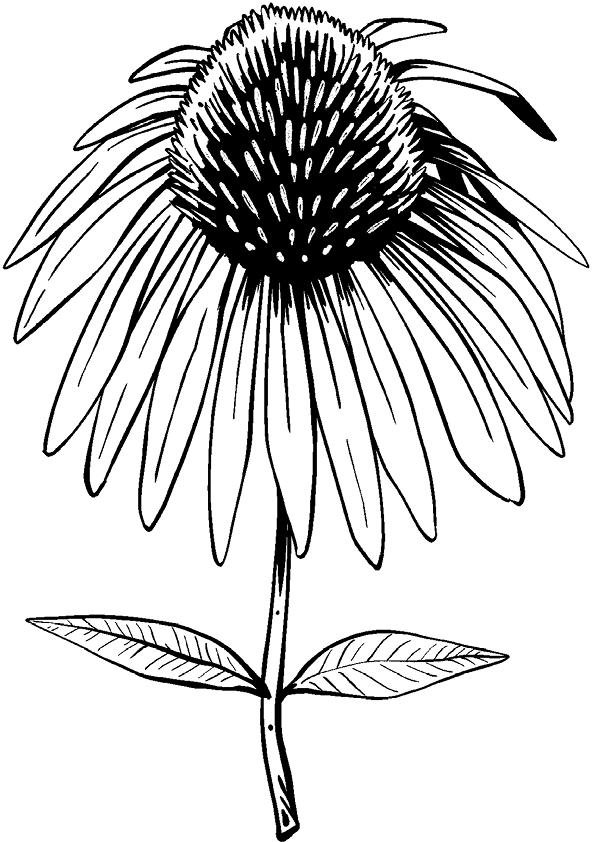Purple Coneflower
and Boundaries
Echinacea purpurea

Purple coneflower is indigenous to North America. Long before Europeans arrived, Native Americans, especially those in the heartland of the country, had a history of using the plant to treat wounds, sore throats, infections, snake bites, and more.15 European herbalists quickly adopted the herb because of its antimicrobial properties that reduce or eliminate bacterial, viral, and fungal infections.
Purple coneflower is also a beautiful perennial plant found in many gardens. It is hardy and dependable, and it flowers over a long period of time. The flowers are lavender or deep purple and resemble a daisy, except a center cone rises up from the flower petals. When my grandchildren were small, they learned quickly that this plant is not one that you run your hands across. It does not sting, but the cone is rough and scratchy. The word Echinacea comes from the Greek word ekhinos, which means hedgehog, a good description of the bristly cone.
The correspondence for purple coneflower is boundaries. The flower resonates with boundaries on a physical level with its rough cone that creates a tough border at the top of the plant. It also emulates boundaries on a cellular level. As a medicinal herb, it has been used to help cells create boundaries that protect them from pathogens and other invaders.
When we bring our attention to boundaries, we notice that the world is full of natural boundaries. Some are permanent, while others are more flexible. In the green world, there are hard boundaries like cliffs and river banks, but also softer boundaries when plants establish territory for themselves as their roots spread out. In our human world, we can observe hard and soft boundaries as well. Setting healthy boundaries for plants and people is an act of self-care. Healthy boundaries create some separation, but they can also be permeable. A healthy cell wall is a boundary that lets in nutrients but blocks attackers. You can energetically emulate your cell walls by doing the same in your day-to-day interactions.
When you are paying attention, you can tap into the energetic feel of boundaries. You know when someone has invaded your space or when you have softened your boundaries to allow loved ones entry. When focusing on boundaries, consider the boundaries between yourself and others or the boundaries between yourself and the green world. You might become aware of boundaries where you didn’t notice them before.
Morning Attunement Questions
• What connections do I have with purple coneflowers and boundaries?
• Where else in the green world or in my life do I observe boundaries?
• What does this correspondence feel like?
• How can I describe the energetic attribute of boundaries in words or pictures?
• Where does this correspondence of boundaries resonate most strongly in or around my body or in my life?
Daily Integration Questions
• In what ways is the world reflecting purple coneflowers or boundaries back to me?
• What nuances and shades of meaning do I notice about purple coneflowers and boundaries?
Evening Reflection Questions
• Where and how did I experience purple coneflowers or boundaries today?
• How did I embrace the concept of boundaries today?
• What wisdom does the purple coneflower’s correspondence of boundaries bring to my life?
15. Bergner, Healing Power of Echinacea and Goldenseal, 13–17.